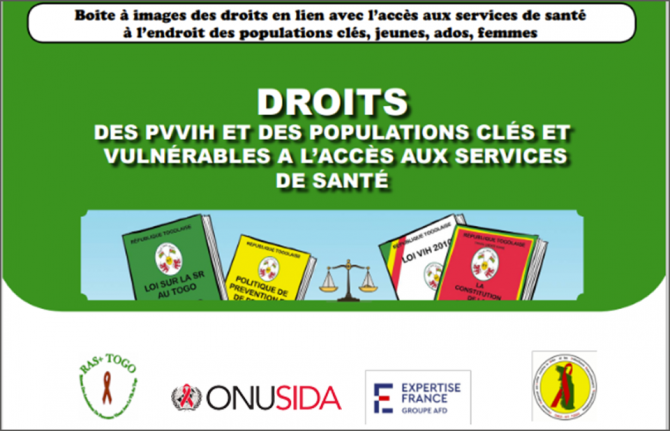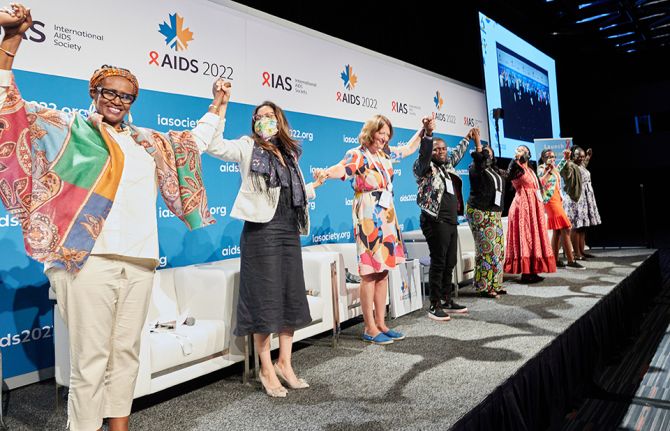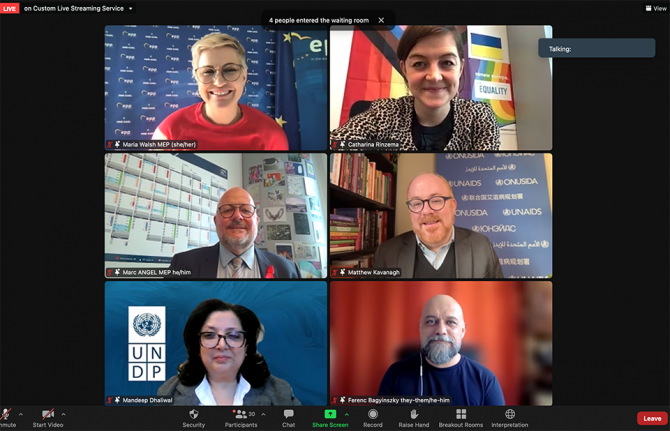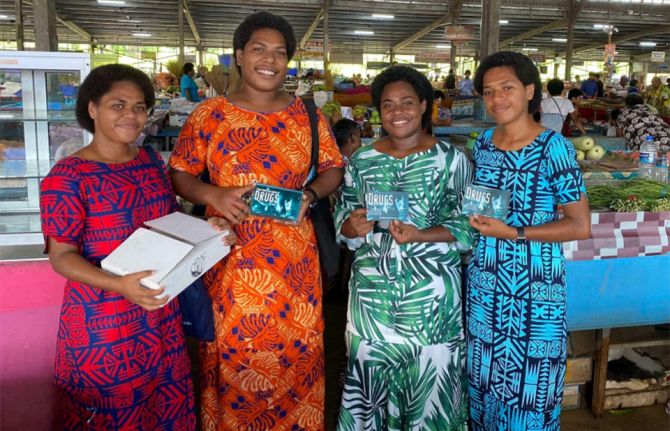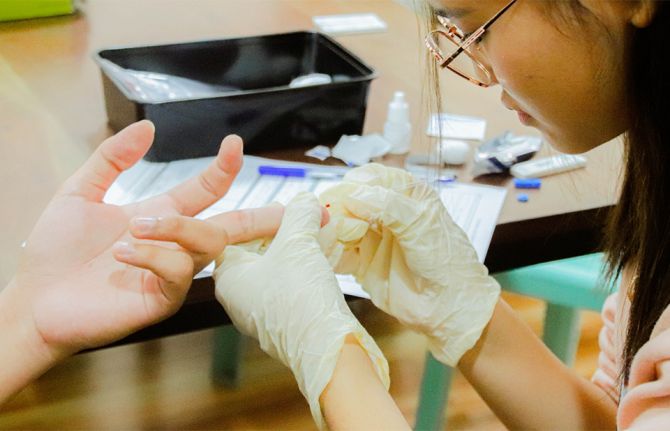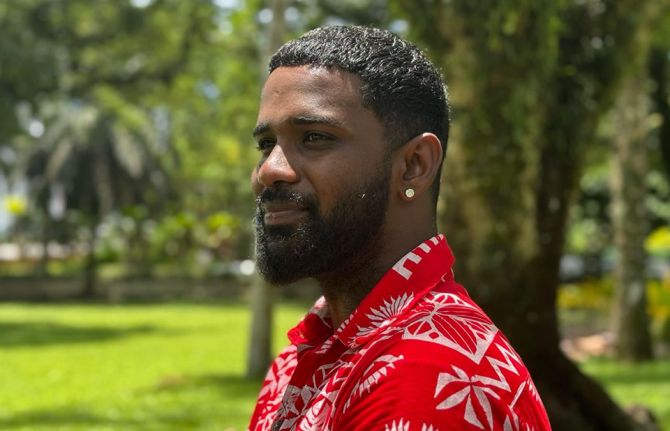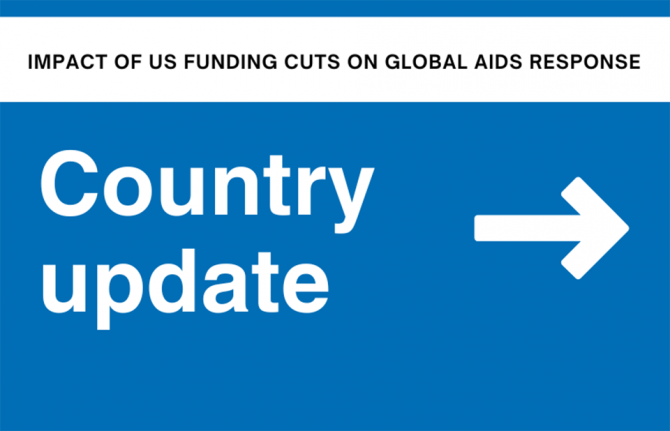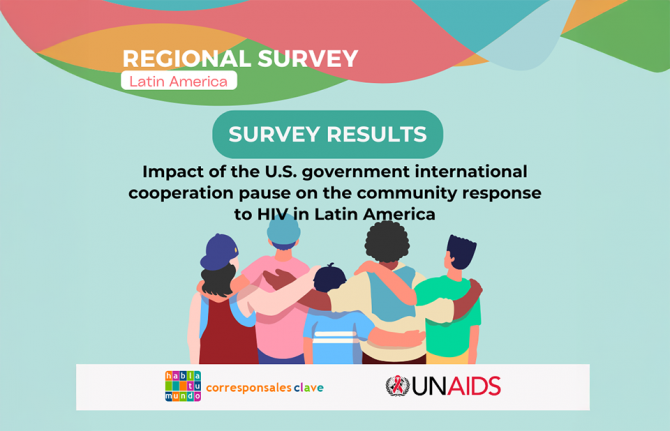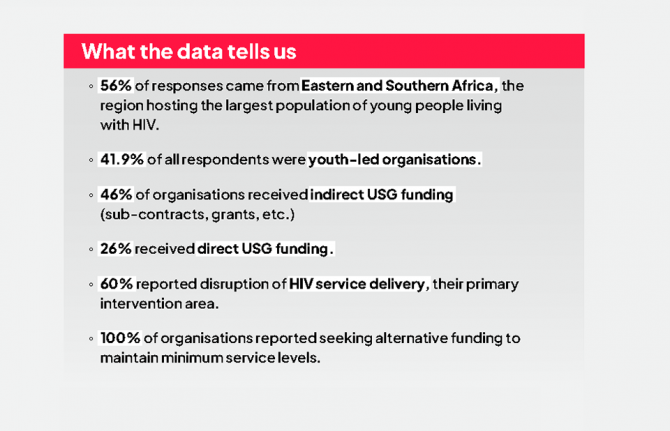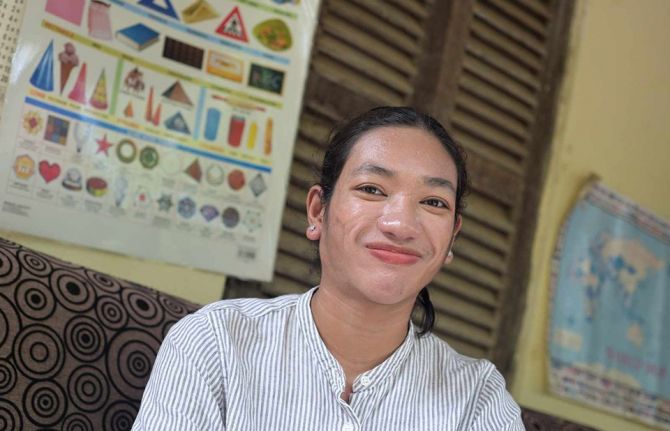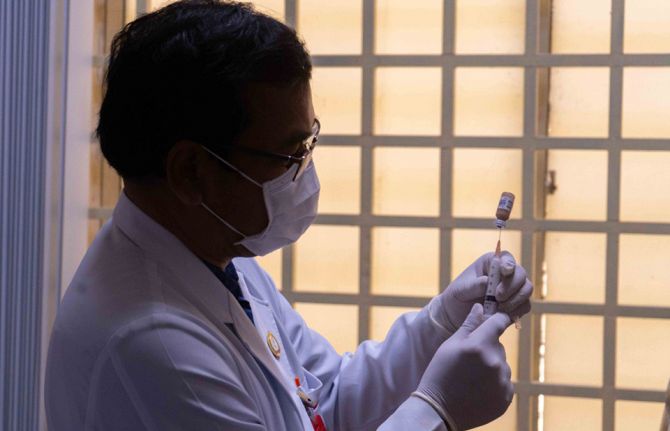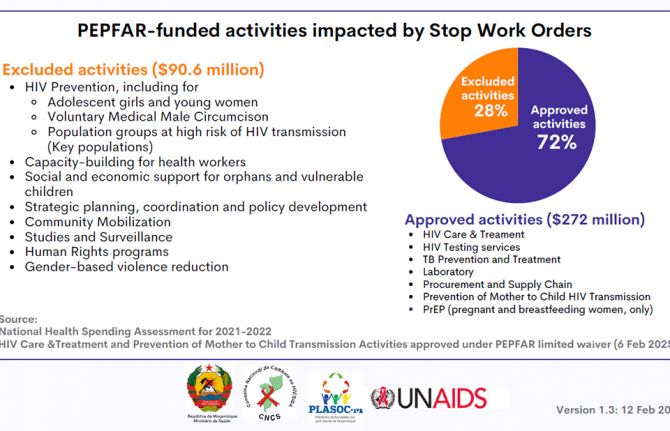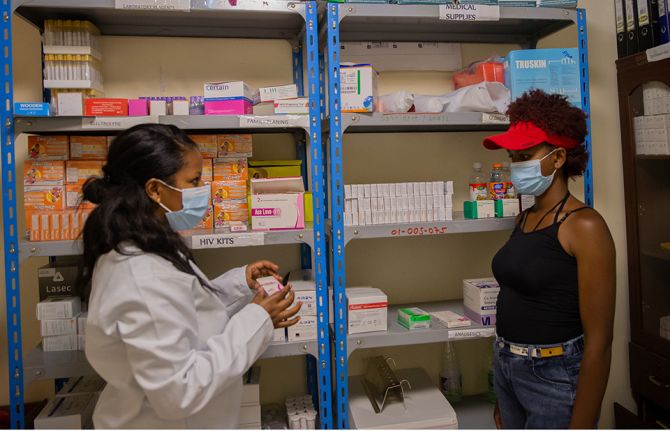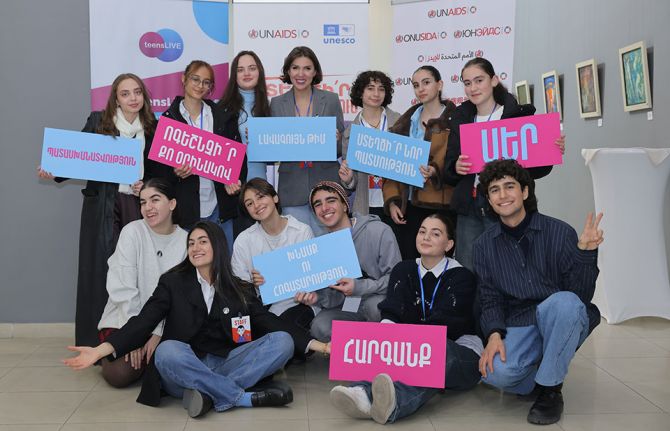
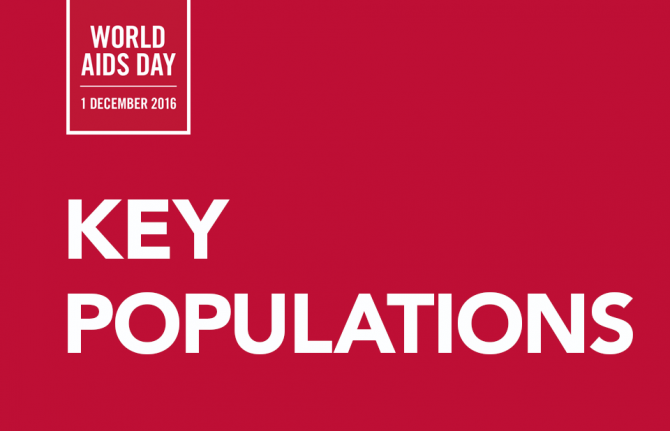
Update
HIV prevention among key populations
21 November 2016
21 November 2016 21 November 2016Since 2010, the annual global number of new HIV infections among adults (15 years and older) has remained static, at an estimated 1.9 million. Members of key populations, including sex workers, people who inject drugs, transgender people, prisoners and gay men and other men who have sex with men, and their sexual partners accounted for 45% of all new HIV infections in 2015.
In some countries and regions, infection rates among key populations are extremely high—HIV prevalence among sex workers varies between 50% and 70% in several countries in southern Africa. One study from Zimbabwe found HIV prevalence rates of 27% for male inmates, 39% for female inmates and 60% for sex workers, with 9.6% of these getting newly infected between 2009-2014. New infections among gay men and other men who have sex with men have been increasing in all regions in recent years. Across countries, key populations are between 10 and 50 times in greater risk of HIV infection compared to other adults.
Criminalization and stigmatization of same-sex relationships, sex work and drug possession and use, and discrimination, including in the health sector, are preventing key populations from accessing HIV prevention services. Effective government support and community-based and implemented HIV prevention and treatment programmes that provide tailored services for each group are currently too few and too small to result in a significant reduction in new infections.
In order to achieve the target of reducing new HIV infections among key populations by 75% by 2020, a large-scale increase of programmes and the creation of an enabling social and legal environment are needed.
Hands up for #HIVprevention — World AIDS Day campaign

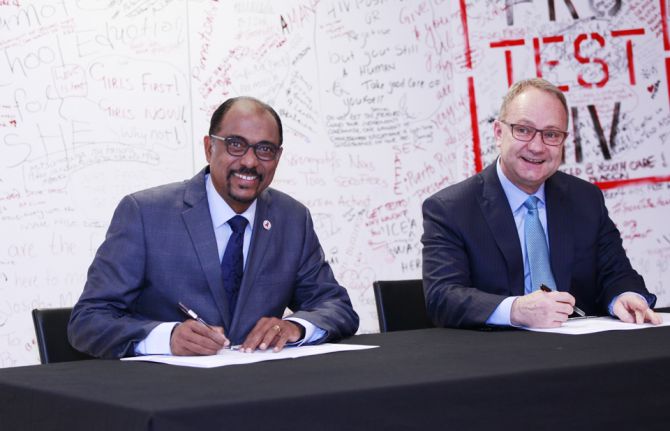
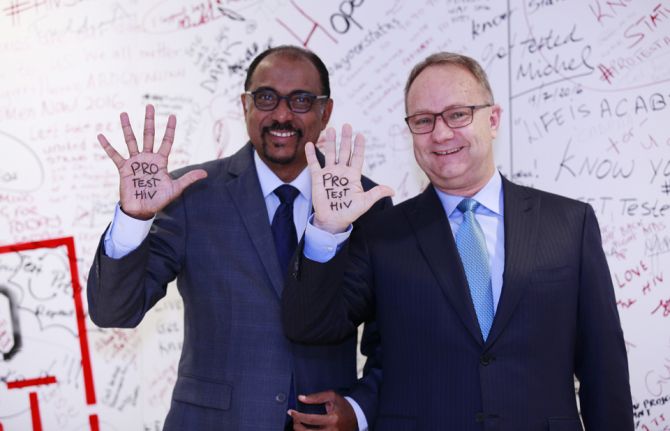

Update
HIV is everybody’s business
15 November 2016
15 November 2016 15 November 2016UNAIDS and Anglo American, one of the world’s largest mining companies, have announced a public–private sector partnership to promote HIV testing worldwide.
Since the early days of the HIV epidemic, Anglo American has experienced first-hand the impact that HIV and tuberculosis (TB) have had on its employees, their families and their communities. For the past three decades, Anglo American has been at the forefront of developing a comprehensive business sector response to HIV and TB. Today, it has a world-class workplace programme offering free HIV testing, counselling and antiretroviral therapy for its employees and their dependents. Anglo American encourages all employees to know their HIV status.
The Sustainable Development Goals provide a new opportunity for the business sector to engage further in the global AIDS response as a powerful, influential and effective partner. Forward-looking companies, like Anglo American, have already demonstrated success in addressing some of the major challenges raised by HIV and TB through business-led ventures that are impactful, scalable, measurable, replicable and go beyond “business as usual”.
During the International AIDS Conference in Durban, South Africa, in July 2016, a UNAIDS and Anglo American initiative to promote HIV testing reached over 6 million people via social media channels and got over 100 000 “protests” on the ProTest HIV website—www.protesthiv.org. In the run up to this year’s World AIDS Day, 1 December, Anglo American is encouraging all its employees to get tested for HIV and to engage in activities that will help to raise awareness on HIV testing worldwide.
Ending AIDS as a public health threat by 2030 will only be achieved by working together. This new partnership demonstrates the power of collective action in mobilizing people around the world.
Quotes
“Anglo American demonstrates that providing HIV and tuberculosis services isn’t just the right thing to do, it’s also a good investment. Business cannot succeed in societies that fail. We are pleased to partner with Anglo American in promoting HIV testing and encourage companies everywhere to scale up their efforts to end AIDS by 2030.”
“We recognize the profound importance of human rights in shaping our response to HIV, and, for that matter, to any disease. Our approach to HIV is based primarily on a moral imperative: the need for business to realize the right to health for all of our employees. Anglo American has been a pioneer in the AIDS response for over 30 years. In our efforts to achieve an HIV-free generation, collaboration is vital and we are proud to partner with UNAIDS in this effort.”
Hands up for #HIVprevention — World AIDS Day campaign

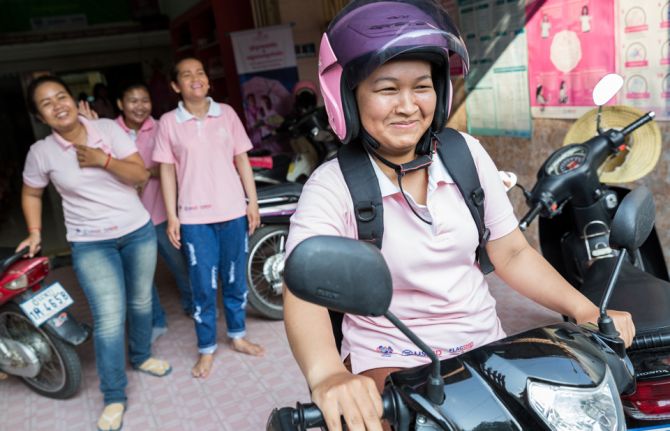

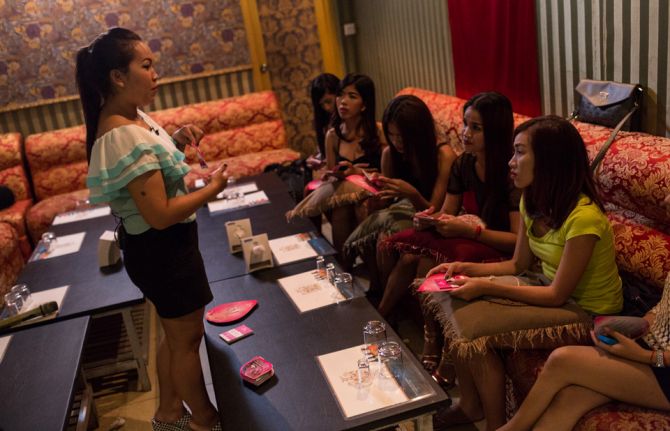
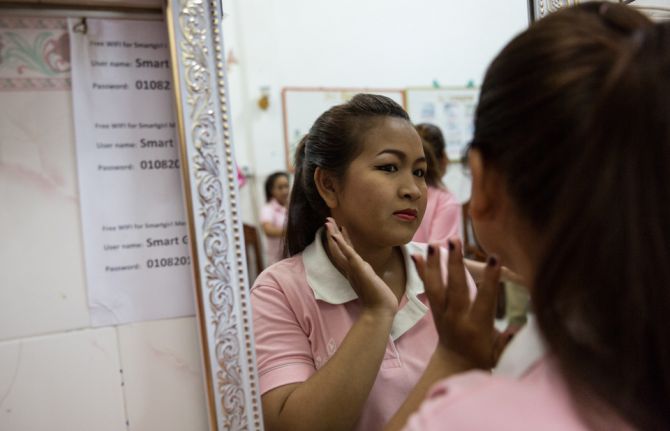
Feature Story
Bringing HIV testing to communities in Cambodia
15 November 2016
15 November 2016 15 November 2016It is nine o’clock in the evening and the night is just beginning in one popular area of Phnom Penh, Cambodia. One multistorey building offers a range of entertainment options: diners enjoy a meal on the ground floor, the bars in the middle level vibrate with popular songs and on the top floor is a hotel.
However, in one corner, next to several karaoke rooms, a serious conversation is taking place. It seems out of context amid the high-pitched laughter, strobe lights, brightly dressed women and male customers. Five entertainment workers are sitting on a sofa talking about why they don’t get tested for HIV.
One woman said, “I don’t know where to go.”
A co-worker agreed and added, “I daren’t go. I am too afraid.”
Their interviewer is 22-year-old Rath Chan Molika. She recently quit her job as an entertainment worker and is now an outreach worker and counsellor with the SMARTgirl programme. She explained why the women working in the karaoke parlour feared public health clinics. “First of all, it’s because they’re scared to go alone,” she says. “Secondly, they’re afraid of the needle and blood.”
There were an estimated 34 000 entertainment workers in Cambodia in 2015, meeting clients in hotels, karaoke parlours, beer gardens, casinos and massage parlours. Unprotected sexual relations with male customers can place some women at higher risk of HIV.
“Some go out with customers without using a condom correctly and consistently. And sometimes they use drugs together, sharing needles and syringes, which increases their risk of HIV,” said Ms Molika.
As part of her job with the SMARTgirl programme, she informs entertainment workers about how to protect themselves from HIV and other sexually transmitted infections and unintended pregnancy. While HIV peer counselling in entertainment establishments has been conducted for a few years, Ms Molika is participating in a highly innovative HIV testing programme.
When the group counselling session ends, she breaks away and in a separate room welcomes Mao Soma. The two women chat quietly for a moment. Ms Molika has been trained to provide pre- and post-HIV-test counselling and to conduct a rapid finger prick test. While Ms Soma winces as the needle pricks her finger, the procedure is over before long. Within 15 minutes there is a result, which suits Ms Soma. “The test is quick and I can get the result immediately,” she says.
Cambodia’s AIDS epidemic is concentrated in key populations
As in many other countries in the region, Cambodia’s AIDS epidemic is concentrated in key populations at higher risk of HIV, which includes entertainment workers, gay men and other men who have sex with men, transgender people and people who inject drugs.
“The government of Cambodia gives importance to collaboration with civil society and also with local people at the community level,” says Ieng Mouly, the Chair of the National AIDS Authority.
Technological innovation in HIV testing
The government, civil society partners and international organizations are now promoting rapid finger prick testing for key populations to replace traditional tests that require laboratory analysis.
“Bringing the facility close to the people is always best. People don’t have to depend on sophisticated laboratory equipment,” explains Ly Penh Sun, the Director of the National Centre for HIV/AIDS, Dermatology and STD.
“The people who are conducting the tests are familiar with the people they are testing. They can interact more. They can support each other,” says Choub Sok Chamreun, of the nongovernmental organization Khana, which provides HIV prevention, care and support services at the community level.
The need for community-based approaches
This community-based HIV testing programme is one of the first of its kind in the Asia and the Pacific region. Across the region, HIV testing coverage among key populations is low. While many countries have scaled up HIV testing in health clinics, representatives of civil society have called for more community-based approaches, focusing on key populations, who often do not attend health clinics.
The results from the Cambodian model are encouraging. Over the past year, implementers reported that more than 36 000 people from key populations were tested, 80% more than in 2014. If a person has a positive reaction on a first rapid screening test, they are accompanied by outreach workers to health facilities for confirmatory tests. Once a medical professional confirms the result, the person has access to HIV treatment.
To improve their efforts to find more people living with HIV, implementation partners are retooling the programme to intensify outreach to people at the highest risk within each key population.
“The plan is to modify the outreach guidelines to the populations at highest risk and intensify targeted outreach activity, as well as active case management, to register and retain the people who were found to be HIV-positive, to ensure they receive treatment,” says Mr Sun.
Hands up for #HIVprevention — World AIDS Day campaign
Region/country

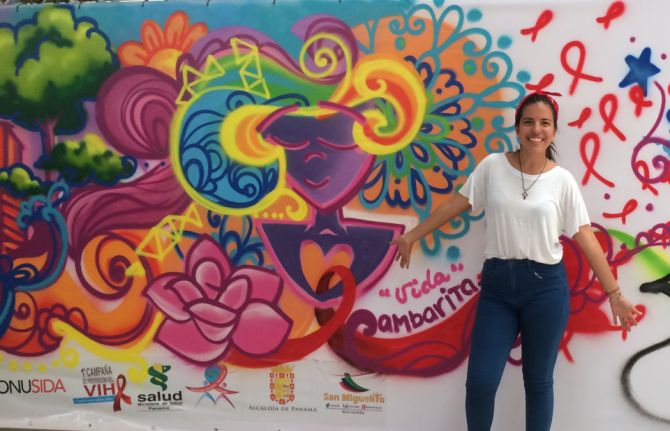
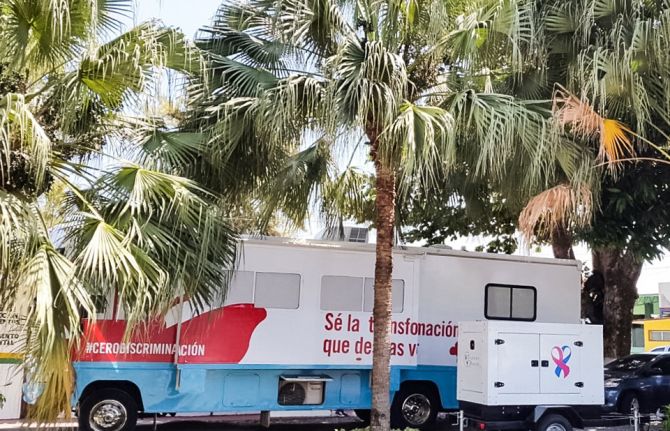

Update
HIV testing campaign in Panama aims to save lives
16 November 2016
16 November 2016 16 November 2016The Tests that Save Lives campaign in Panama, launched within the framework of the Global ProTest HIV initiative, aims to reduce the number of new HIV infections and AIDS-related deaths by offering free HIV testing and counselling every June. When the campaign was rolled out in June 2015, more than 13 100 people were tested for free across the country. That number increased to more than 16 200 in 2016.
Health fairs are held and mobile clinics tour as part of the campaign, which is led by the Ministry of Health, the Social Security Fund, the Office of the First Lady, the Inter-Governmental Network for HIV Prevention, the private sector and civil society.
Owing to the campaign’s success, the government decided in 2015 to make HIV testing free for adolescents and members of key populations in all public health-care facilities. From 2018, HIV testing will be free for everyone in Panama.
First Lady Lorena Castillo de Varela’s Love on Wheels is a complementary initiative offering HIV testing and integrated health care through mobile clinics to women living in marginalized and rural communities.
Panama adopted the Fast-Track Targets in 2015, which, if met by 2020, will allow the world to end the AIDS epidemic by 2030.
Quotes
“Testing is the first step in accessing services to respond to HIV. My commitment is to make the necessary efforts to open this door to HIV care to all people, without discrimination.”
“Panama has made important achievements in a short time in terms of access to HIV testing. This shows that with political commitment, the end of the AIDS epidemic can be reached by 2030.”
“Increasing the testing coverage has been a challenge in terms of advocacy, coordination and implementation, but it is certainly one of the greatest achievements of the national response that puts us closer to reverting the course of the epidemic in Panama.”
Hands up for #HIVprevention — World AIDS Day campaign
Region/country

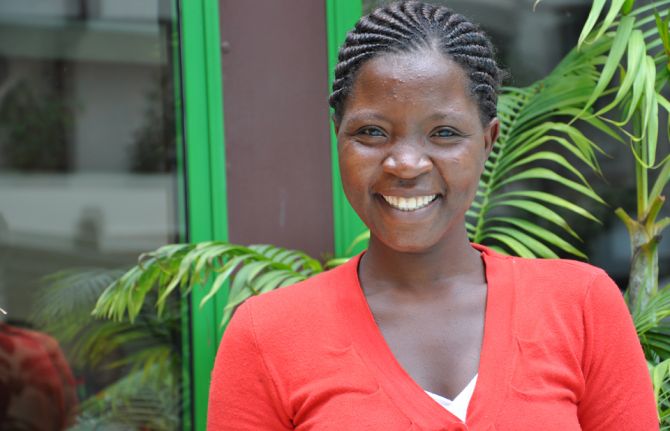
Feature Story
Reducing the impact of HIV among adolescent girls
11 November 2016
11 November 2016 11 November 2016Around 180 young women and adolescent girls from Malawi, Kenya and Uganda have led a pilot project that aims to strengthen the leadership of young women and adolescent girls in the AIDS response. Called Empowerment + Engagement = Equality, the programme aims to build stronger leadership among young women and adolescent girls to engage in national assessments initiated by the All In to #EndAdolescentAIDS platform. The programme addresses issues of gender inequality that heighten adolescent girls’ vulnerability to HIV infection and provides safe spaces where experiences can be shared.
The initiative, designed and implemented by UN Women and the International Planned Parenthood Federation, mobilized more than 1000 young advocates, including young women living with HIV, to voice their concerns at the local, regional and national levels. As well as sharing knowledge among themselves, the participants engaged in face-to-face and online meetings with parents, teachers, religious leaders and other community stakeholders to discuss how to change harmful gender norms and inequalities that increase the risk of HIV infection.
The First Lady of Malawi, Gertrude Mutharik, participated in one of the discussions and committed her support to challenging the issues that increase the risk of HIV infection among young women, including gender-based violence. The young leaders have continued to advocate at the highest levels, taking part in debates at the International AIDS Conference in Durban, South Africa, in July 2016.
“Some of the most fulfilling work I have done as part of this project is to support other girls like me to feel empowered and in control of their lives,” said Divina Kemunto, from Kenya, “I shared my personal experience and encouraged girls living with HIV to believe that they too can walk with their heads held high and a smile on their face.”
Preventing new HIV infections among adolescent girls and young women in sub-Saharan Africa is crucial if the world is to end the AIDS epidemic by 2030—in 2015, 75% of new HIV infections in sub-Saharan Africa among adolescents were among adolescent girls aged 10–19 years. Preventing infections means empowering young women and girls to stay in school so they have better economic prospects, ensuring that they have the knowledge, information and tools to avoid unintended pregnancy and sexually transmitted infections and making sure they know what to do when faced with sexual violence.
Laws and policies that discriminate against women and girls must be dismantled and their sexual and reproductive health and rights must be fully respected.
Hands up for #HIVprevention — World AIDS Day campaign
Related
 “Who will protect our young people?”
“Who will protect our young people?”

02 June 2025

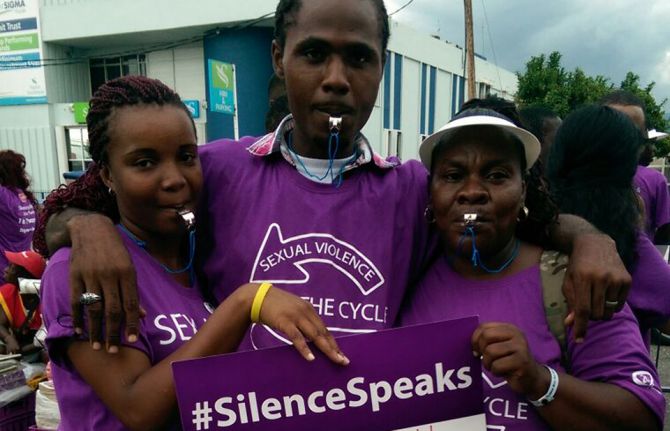
Feature Story
How one Jamaican organization is empowering adolescent girls living with HIV
10 November 2016
10 November 2016 10 November 2016Rushell Gray unflinchingly shares the story of her journey to the edge and back. She was infected with HIV after being abused at the age of nine, but her eight-year-old daughter is HIV-free. “It has been difficult. As a young girl in the community everybody turned a blind eye and blamed me,” she said. “Nobody said this man needs to go to jail. At one point I gave up because the stress was too high,” she recounts.
A petite young woman, Ms Gray is confident and articulate. She credits the Jamaican nongovernmental organization Eve for Life and its transformative programme for her turnaround. Through a combination of counselling, personal development and life-skills education, she has become one of the powerhouse peer educators of Mentor Moms.
The Mentor Moms programme deploys young, empowered women who are affected by HIV and young mothers to help others along the journey. They answer questions and offer reassurance, accompany adolescent girls to their clinic visits and they reinforce guidance on taking medicines, avoiding breastfeeding and keeping clinic appointments.
Ms Gray clarifies that the issues her mentees face are not just about HIV. “They do not have resources, they are not safe in their houses, they are afraid a partner or their family might throw them out. They might have two children or more,” she said. A 2012 survey by the Jamaica National HIV/STI Programme found that one in every five adolescent girls in Jamaica aged 15–19 years reported having experienced sexual violence.
Eve for Life Executive Director and co-founder Patricia Watson noted that many girls are being left behind. “A recent study showed that among girls in state care, 30% have sexually transmitted infections, 41% attempted suicide and 35% have been forced to have sex. Also, children infected with HIV at birth are growing older and becoming sexually active, some without having been informed about their status,” she said.
For the organization, responding to HIV among adolescent girls is about far more than promoting sex messages. It is fundamentally about social protection and addressing the structural and social issues that increase girls’ vulnerability.
For the past two years, Eve for Life has spearheaded the Nuh Guh Deh! (Don’t Go There) national campaign to end sex with girls.
“The overarching goal is to contribute to reducing sexual abuse of girls in Jamaica,” Ms Watson said.
The campaign seeks to mobilize Jamaicans to report acts of sexual violence while increasing awareness about the long-term effects of abuse and the links to HIV. Survivor stories highlight the serious issues they face. The approach maximizes participation and ownership from adolescent girls and young women who have survived sexual abuse.
The Nuh Guh Deh song by the Jamaica dub poetry group No-Maddz aims to reduce social acceptance of predatory relationships between older men and girls.
Hands up for #HIVprevention — World AIDS Day campaign
Region/country
Related
 “Who will protect our young people?”
“Who will protect our young people?”

02 June 2025

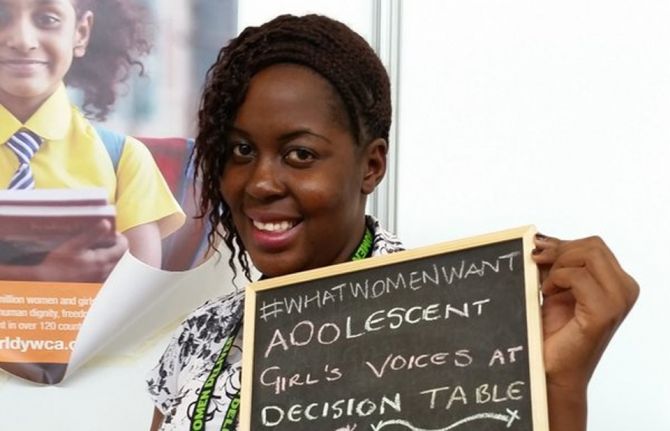
Feature Story
#WhatWomenWant for the HIV response: a new space for new conversations
10 November 2016
10 November 2016 10 November 2016#WhatWomenWant is a virtual space that amplifies the voices of young women, allowing them to share expertise and life experiences, explore solutions and build strengthened networks across gender-related issues, sectors and movements.
Inspired by the impact of the virtual activism surrounding the 2016 Commission on the Status of Women, the Athena Network and its partners, including UNAIDS, used the momentum to build a platform where women could mobilize around the United Nations General Assembly High-Level Meeting on Ending AIDS. From May to July 2016, a social media campaign reached 13 million Twitter accounts and organized five Twitter conversations that engaged 120 000 people. The aim was to hear what women want and to identify specific actions needed to change the lives of women and girls.
The initiative continues to engage an expanding network of primarily women-led organizations working to advance gender equality, with a special focus on areas where health and rights meet.
#WhatWomenWant aims to:
- Focus attention on the urgent need to address women’s rights and gender-related disparities within and beyond the HIV response.
- Act as a catalyst for joined-up action where gender equality, human rights, sexual and reproductive health issues, gender-based violence and the HIV response intersect.
- Put women in charge of defining their own agendas.
- Harness the experience of women to create advocacy tools to advance their own solutions wherever they are.
- Identify opportunities for women to engage stakeholders and to be meaningfully involved in the decision-making processes that most affect their lives.
#WhatWomenWant continues to strengthen links across movements to end child marriage, stop sexual violence, ensure safe and legal abortion rights and advance comprehensive sexuality education.
“At a time when funding for women's rights has been on the decline, the #WhatWomenWant online campaign provides a space for young feminists to contribute to and influence global policy discussions on the HIV response,” says Catherine Nyamburra, a young activist from Kenya. “It provides a space to amplify young feminist voices through various channels of participation and for feminist thought leadership in the response to HIV.”
Video
United States Global AIDS Ambassador, Deborah Birx, explains why young women are more vulnerable to becoming infected with HIV. 1000 young women are being infected every day = 7000 a week globally.
Hands up for #HIVprevention — World AIDS Day campaign
Campaigns
Related

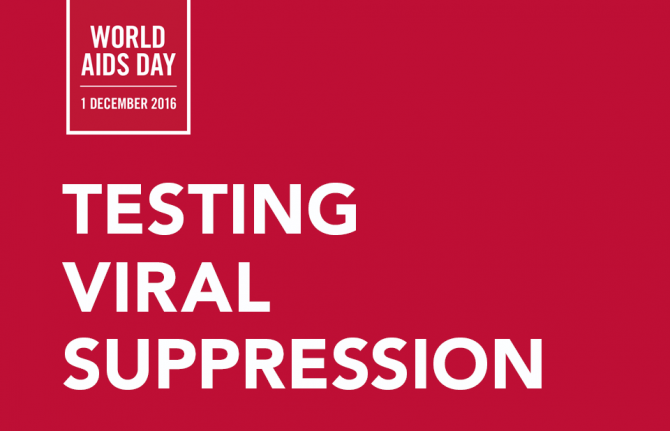
Update
Testing viral suppression
14 November 2016
14 November 2016 14 November 2016Strong adherence to antiretroviral therapy suppresses viral load to undetectable levels within people living with HIV, greatly reducing the risk of transmitting the virus to others. When large proportions of people living with HIV within a community are on treatment, it has been shown to have a preventive effect within that community. Achievement of UNAIDS 90–90–90 treatment target by 2020 alongside high coverage of primary HIV prevention interventions can make the end of the AIDS epidemic a reality by 2030. The 90-90-90 treatment target means that 90% of people living with HIV know their HIV status, 90% of people who know their HIV status are accessing treatment and 90% of people on treatment have suppressed viral loads.
However, the global gap in achieving the 90-90-90 target in 2015 was around 11.9 million people living with HIV who did not know their HIV status, 12.7 million people in need of antiretroviral treatment and 13.0 million people living with HIV who were not virally suppressed.
Hands up for #HIVprevention — World AIDS Day campaign
Related

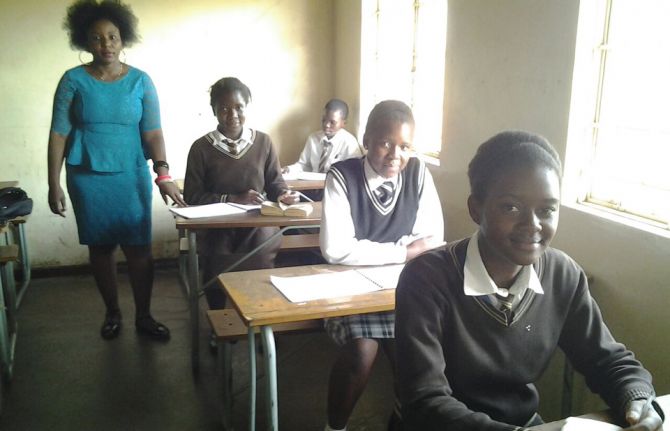


Feature Story
Comprehensive sexuality education in Zambia
09 November 2016
09 November 2016 09 November 2016It is estimated that worldwide only three in 10 adolescent girls and young women between the ages of 15 and 24 years have comprehensive and correct knowledge about HIV.
With inadequate knowledge, young people are ill-equipped to make healthy and safe decisions about their sexual health. However, knowledge, while a crucial foundation, is not in itself sufficient to change behaviour and reduce the risk of HIV infection. Knowledge needs to be combined with the right skills and attitudes, which can be taught and developed through high-quality comprehensive sexuality education (CSE).
CSE not only plays an important role in preventing negative sexual and reproductive health outcomes, but also offers a platform to discuss gender issues and human rights and to promote respectful, non-violent relationships. However, gender-responsive and life-skills-based HIV and sexuality education is only covered in the national curriculum by 15% of the 78 countries analysed in the Global education monitoring report, recently launched by the United Nations Educational, Scientific and Cultural Organization.
When CSE programmes focus on gender and power relations, they are much more likely to show positive effects in reducing sexually transmitted infections and unintended pregnancies than programmes ignoring gender and power.
Such a gender-responsive CSE programme have been implemented in Zambia, which is a signatory to the 2013 Ministerial Commitment on comprehensive sexuality education and sexual and reproductive health services for adolescents and young people in eastern and southern Africa.
The curriculum in Zambia focuses on puberty, HIV prevention, gender equality, sexual and reproductive health, relationships and human rights. The overall goal is for adolescents and young people in Zambia to enjoy better sexual and reproductive health and have better health outcomes overall.
Zambia currently has the largest population of young people in its history, with 52.5% aged below 18 years. During their school years, teachers and sexual health specialists have an ideal opportunity to reach students with correct and appropriate health education information. The onset of adolescence brings not only physical change but also vulnerabilities to human rights abuses, particularly in the areas of sexuality, marriage and childbearing.
Harriet Lilanda, aged 13, a student at Twalumba Primary School in Lusaka, Zambia, thinks that the new sexuality education curriculum is important for young people. “Talking openly about sexuality was not an easy thing, as boys would think I am a loose girl. Parents at home were also closed up on us; now I think the knowledge which we are receiving in class will help me,” she said.
Both teachers and students in Zambia welcomed the introduction of CSE in schools and appreciate its contribution to the attitudes of young people.
“I saw the need to get more involved in teaching comprehensive sexuality education because of the way our society hides information on sexuality,” says Agather Shindende, a teacher at Kabulonga Primary School. “I remember growing up and being told that if you sit next to a boy at school you would conceive. I don’t want the current generation to go through what we went through.”
Schools have the potential to contribute to healthy individual behaviour as well as improved social norms around equality and non-violence, but this cannot be realized if, at the same time, they are places of gender inequality and violence. Access to a safe learning environment must be combined with education about gender equality, non-violent behaviour and sexual and reproductive health for everybody.
“Among the topics that I have learnt, gender stands out as the most interesting one,” says Harriet Lilanda. “I like gender because it teaches us to be equal. Boys and girls can do the same things—mathematics, science, home economics and technical drawing. I have learnt that we must respect each other and that household chores have to be done by girls and boys.”
Gender practices, norms and values influence sexuality, reproduction and relationships: unequal gender relations make it difficult for women and girls to make choices about sex, as well as increasing their vulnerability to violence, early marriage and adverse sexual and reproductive health outcomes.
Ms Shindende appreciates the benefits of CSE and feels that results are slowly being noticed. “The attitude and behaviour among learners regarding gender norms is slowly changing for the better, especially among boys,” she says. “Previously, boys never wanted to take subjects like home economics because they considered it as a subject for girls only, but today, out of 45 learners, 20 are boys and they willingly chose home economics as one of their optional subjects. Therefore, you can see that teaching comprehensive sexuality education from an early age can open up the minds of our young people. We also have many girls taking art and design courses, including technical drawing, which were exclusively for boys.”
When young women and adolescent girls have access to comprehensive age-appropriate sexuality education before becoming sexually active, they are more likely to make informed decisions about their sexuality and approach relationships with more self-confidence. CSE is also known to increase young girls’ condom use, increase voluntary HIV testing among young women and reduce adolescent pregnancy, especially when linked with non-school-based youth-friendly health services provided in a stigma-free environment.
Watch UNESCO video — Being a Young Person: Comprehensive Sexuality Education
Hands up for #HIVprevention — World AIDS Day campaign
Related

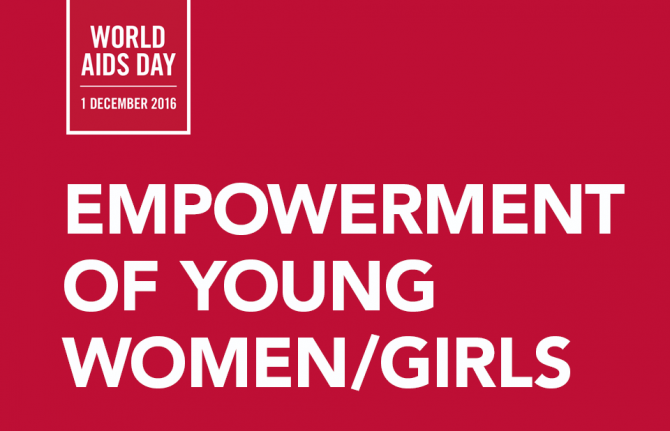
Update
Empowerment of young women and girls
07 November 2016
07 November 2016 07 November 2016Young women aged 15–24 years are at particularly high risk of HIV infection, accounting for 20% of new HIV infections among adults globally in 2015, despite accounting for just 11% of the adult population. In sub-Saharan Africa, young women accounted for 25% of new HIV infections among adults and women accounted for 56% of new HIV infections among adults. Gender inequalities, including gender-based violence, exacerbate women’s and girls’ physiological vulnerability to HIV and block their access to HIV services. Young people are denied the information and the freedom to make free and informed decisions about their sexual health, with most lacking the knowledge required to protect themselves from HIV. The impact of these barriers is strongest in high-prevalence settings, predominantly in eastern and southern Africa.

